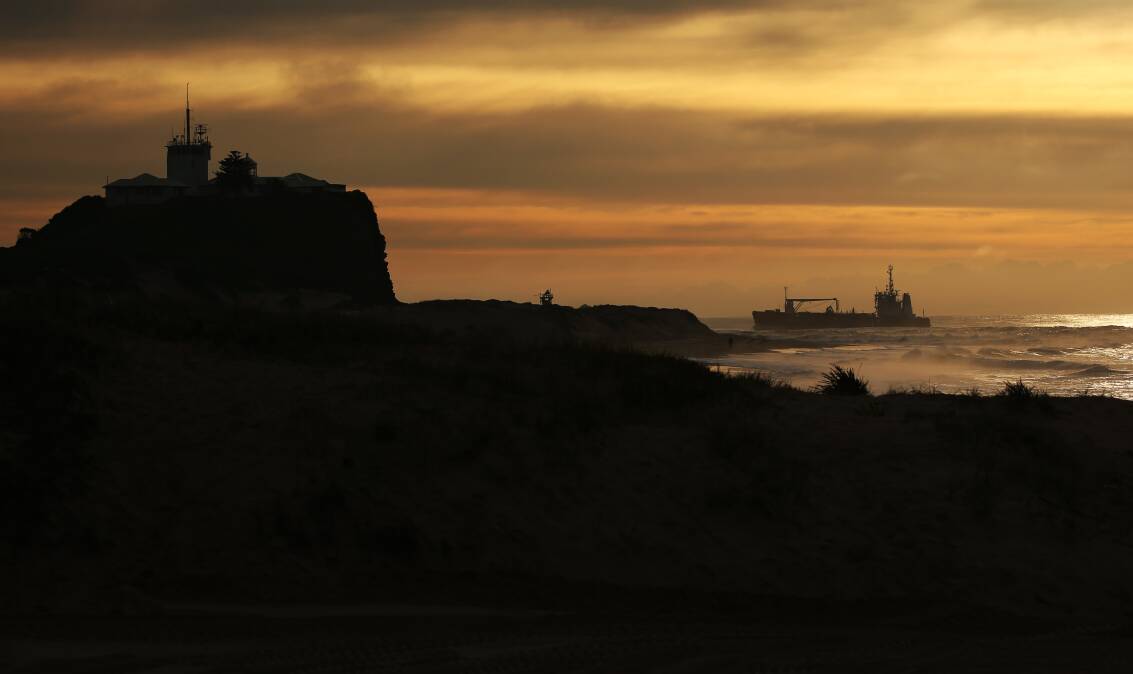
SINCE it was born in 1804, Newcastle has played a lot of roles and worn a string of labels.
It has been a convict settlement and a coalopolis, a wartime garrison town and an industrial hub.
Yet through it all, Newcastle has been a harbour community.
Newcastle exists because of the harbour. Those other things associated with Newcastle have come into being because of the harbour.
Even when it was known as Steel City, Newcastle was actually, first and foremost, a harbour town.
Long after the furnaces cooled at the BHP steelworks, no longer impressing and moulding how the world sees this place, Newcastle continues to be a harbour town.
The harbour shapes who we are as Novocastrians. We are water people.
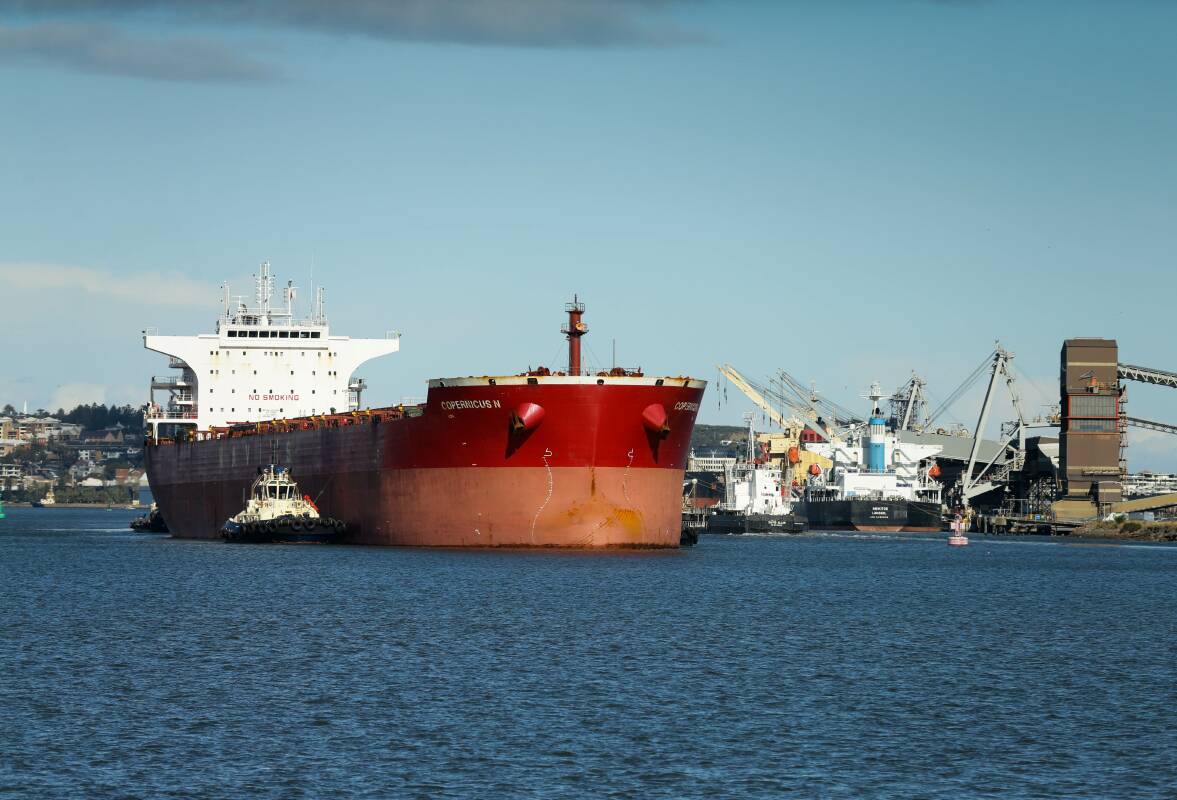
The first harbour people, from the Worimi and Awabakal nations, knew, and continue to know, the ties that bind this place to the water. In the Indigenous language, the area where Newcastle grew is known as Mulubinba, meaning the place of mulubin, a sea fern that the First Nations people harvested from the harbour.
Then in 1797, Lieutenant John Shortland sailed into what the Indigenous people called Yohaaba.
Lieutenant Shortland, the first European on record to have entered the harbour, named the waterway feeding it Hunter's River. He saw great potential in this harbour, and in the coal to be found along the shoreline. In a letter to his father, John Shortland wrote, "Vessels from 60 to 250 tons may load there with ease, and completely landlocked. I dare say, in a little time, this river will be a great acquisition to this settlement."
The harbour had already been, for many generations, not so much a great acquisition but a bountiful provider for the First Nations peoples, as they drew food and medicine, stories and culture from it.

Emeritus Professor John Maynard, the co-head of the Purai Global Indigenous History Centre at the University of Newcastle, noted colonial accounts of First Nations women diving in the harbour and surfacing with lobsters far bigger than anything seen in Europe.
"It provided Aboriginal people with a really rich lifestyle," said Professor Maynard of the harbour.
As Professor Maynard points out, the Indigenous people were also the first to use the harbour as a means of getting somewhere, slicing across the surface in canoes, and fishing and cooking their catch in clay pots in their craft.
Yet, as Lieutenant Shortland forecast, ships began arriving in the harbour, and they have never stopped coming and going.
The ships remind us the harbour is a constant presence in our lives.
We can stand at the top of some streets on The Hill and gaze down at ships sliding by the city, their hulls' great walls of steel fleetingly blocking the view before they glide out of sight, leaving only water - and wonderment. After all, how many cities on earth have ships moving through their CBD?
In so many other ways, however, the harbour flows through our lives without us even realising it. That water carries in products we use every day, it cradles and generates jobs, and it links us to the rest of the world.
Our lives, and the life of the city, have grown and been enriched because of the harbour.
Our lives are harbour lives.
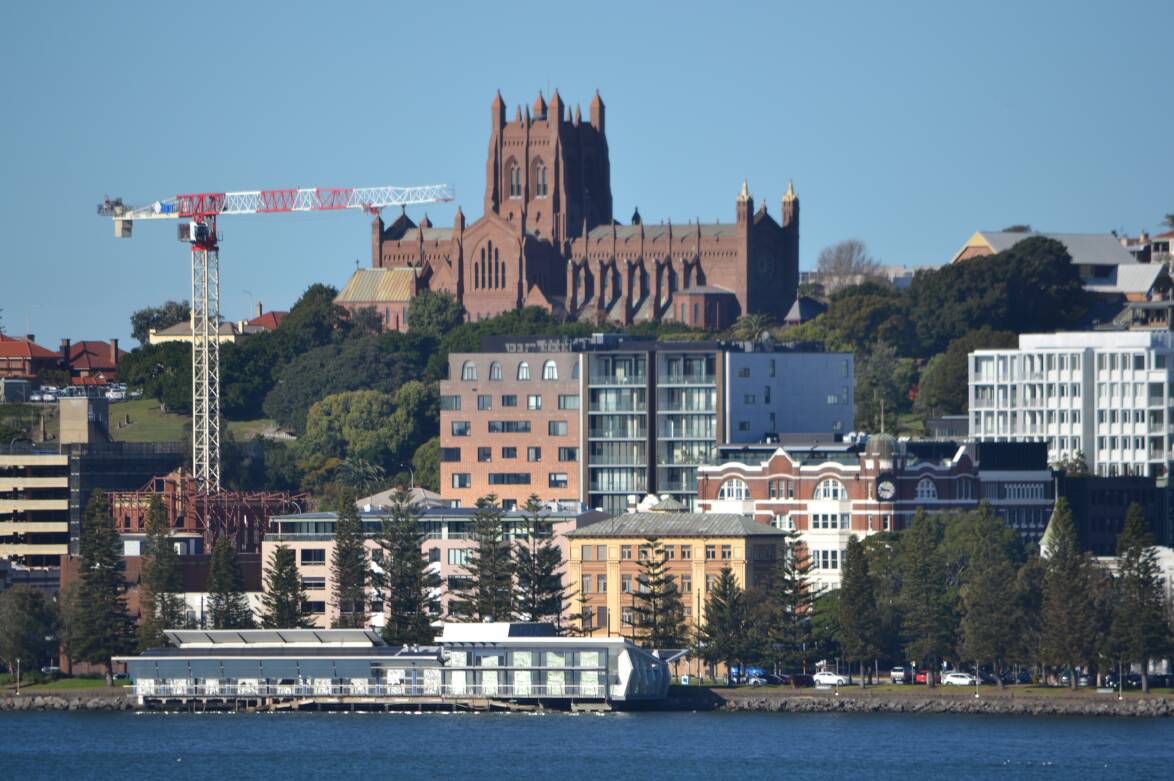
What's more, this is one busy harbour, with about 4500 ship movements in and out of the port each year. In 2021, Port of Newcastle reported, there were even more, with 4697 ship movements, transporting 166.1 million tonnes of cargo, the bulk of that coal. As Peter Ernst, from the Port Authority of NSW says, "It's by far the busiest port on the eastern seaboard, in my humble opinion".
But the harbour is not just a conduit for big ships and even bigger business. It hosts fishing vessels, both commercial and recreational. It is a playground for all manner of craft, from sailing boats to outrigger canoes. It is a swimming pool. It provides a dynamic backdrop for restaurants and bars, and, increasingly, for those who live on the waterfront.
Above all, the harbour is a reservoir of ambitions and dreams.
The harbour holds the dream of what it means to be in Newcastle.
As Lord Mayor Nuatali Nelmes asserts, "The harbour is integral to all things Novocastrian".
Each Saturday for the next eight weeks, join me on a journey around the harbour, as I meet and talk with some of those who work, play and live along its shores or on its waters.
Through their stories and our travels, we shall explore this waterway's past, its present, and what its future may look like.
So to begin on our harbour journey, let's take to the water.
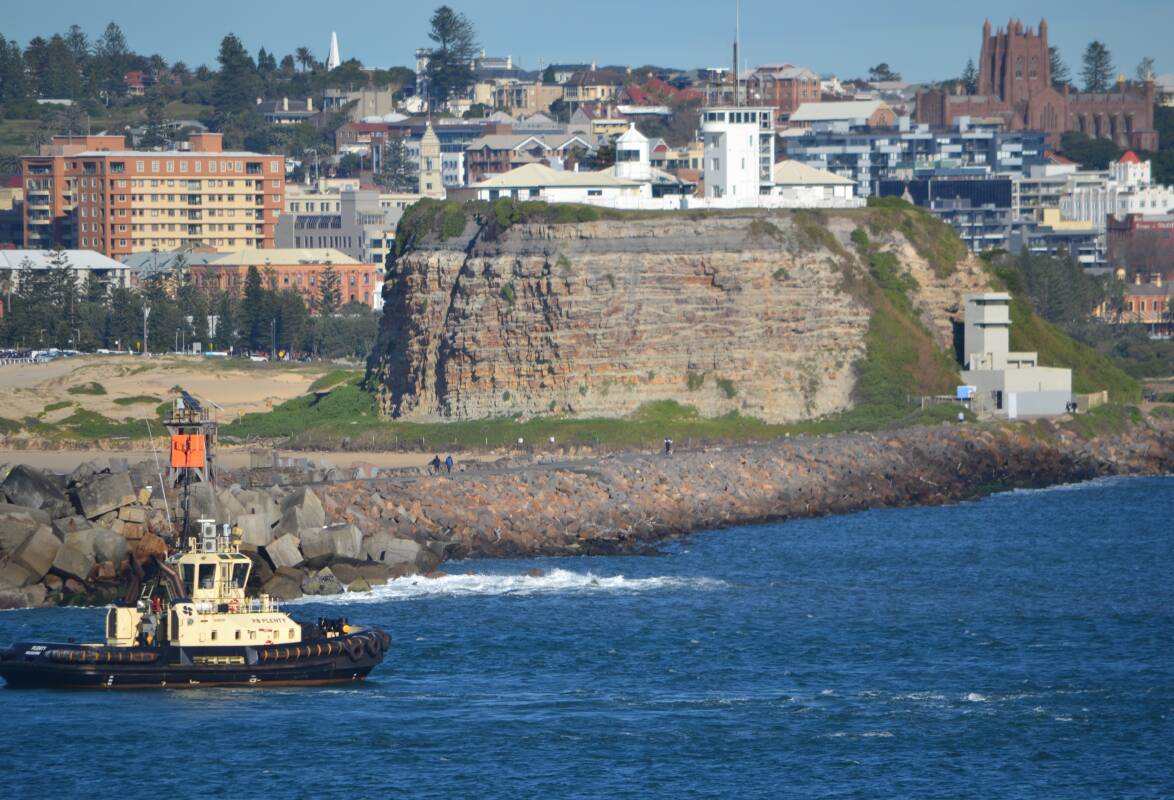
FROM four nautical miles, or 7.4 kilometres, out to sea, it is hard to make out the entrance to Newcastle harbour.
But Captain Mark Webb knows where he is going. He can read water like a nautical chart.
Captain Webb is a marine pilot with the Port Authority of NSW. In his 11 years with the port authority, he has helped guide about 2500 ships in and out of the harbour.
On this day, he is on the bridge of MV Anikitos, a bulk carrier bound for Newcastle to load coal at a berth known as Dyke 5, near where the north and south arms of the Hunter River join after curling around Kooragang.
On board the ship is the Greek captain, Sakellarios Kypraios, and his 22 crew members, most of whom come from the Philippines.
The pilot relays directions to the ship's crew, navigating the ship towards the harbour's entrance.
"Now heading two-seven-zero," Mark Webb says. "Two-seven-zero," repeats the crew member steering the ship.
The coastline is spread out before us. I can see the arch of Stockton Bridge and the long sweep of sand along Stockton Bight. And just off to the left is Nobbys, the headland standing out like a navigational beacon. Which, for Captain Webb, it is.
"It's one of our many marks we use for coming in. It stands out night and day for us," he explains, before giving the instruction for the ship to head towards the entrance. "Steer two-nine-zero."
On the approach, Mark Webb takes a moment to appreciate what is there before him.
"It's probably the best view of the harbour, or the city, you'll get," he says. "Our height is 30 or so metres, so we get a good view over everything as we come in."
The view was even more expansive on the way to the ship.

The pilots are usually transported to and from inbound and departing ships by helicopter. Newcastle is the only port in NSW that does pilot transfers by air rather than by sea. It is quicker and means the pilot doesn't have to climb up the side of a ship on a ladder in all sorts of conditions.
"I love it, and it's a great way of going to work" Captain Webb had said, as he scanned the Tasman Sea to the south. There was no shortage of work waiting for him, with coal ships studding the sea.
"An average week is maybe 100 to 120 ship movements, and it just keeps going, night and day. They keep coming, we keep filling them up and sending them on their way."
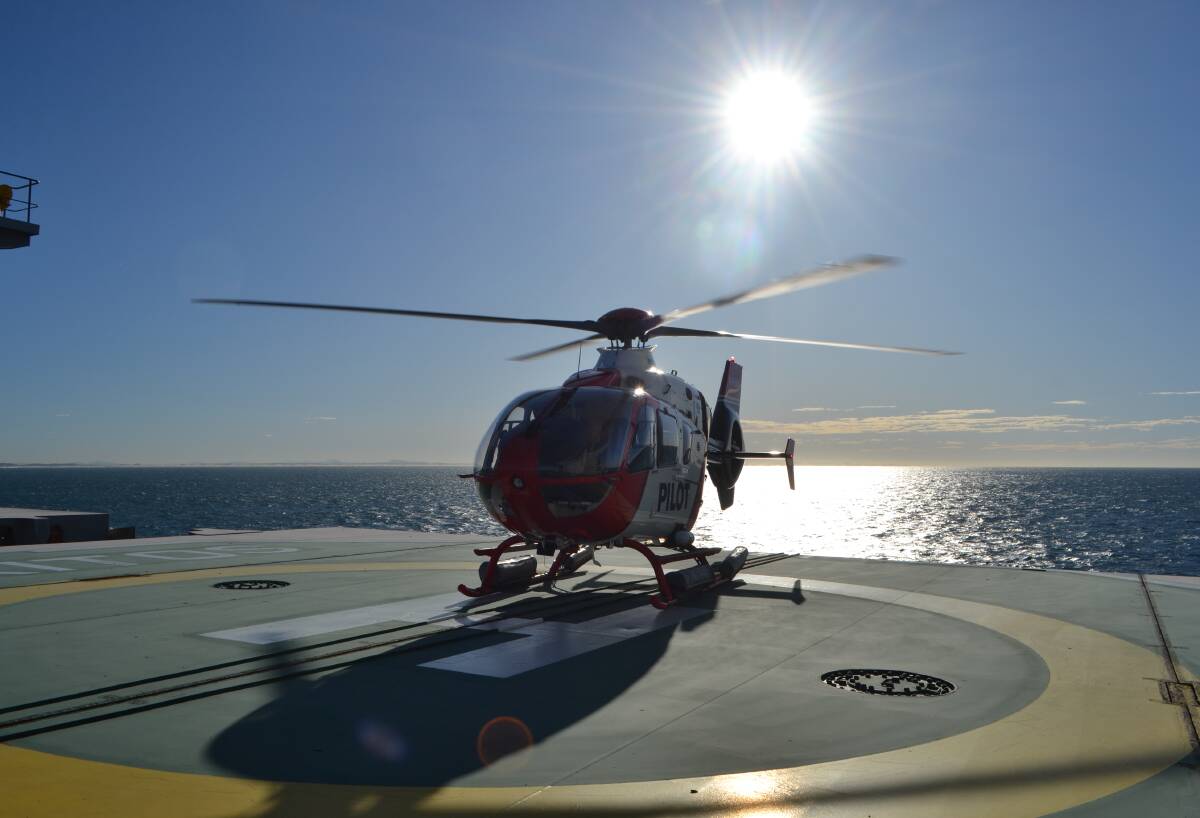
The helicopter gently landed on the Anikitos' deck, and Mark Webb climbed the ship's stairs to the bridge to go through what is known as the master-pilot exchange, to "take over the conduct of the vessel", in Captain Webb's words, for the final part of the voyage into the port.
Having been on ships since 1968, Captain Kypraios is well versed in the wilful ways of water and has entered Newcastle harbour before.
"The last time was January," the ship's captain says. "I think it's fine."

However, what the marine pilots bring on board the visiting ships is deep local knowledge of a notoriously tricky passage.
"The challenge is the entrance itself," Captain Webb says. "The swell that Newcastle's well known for rolls across the entrance.
"The channel is quite narrow at 180 metres, so it takes a little bit of a challenge to line the ships up to get them exactly in the middle as we come through, with the swell."
Harbours provide respite from the cruel sea to ships and those on board. However, ever since vessels began entering Newcastle harbour, many have collided with trouble and tragedy.
Before Newcastle was even founded, Francis Barrallier, who surveyed the harbour as a member of an exploratory party in 1801, noted, "What a dreadful passage has to be made to enter this beautiful river".
Barrallier referred to the dangerous voyage that could "make the bravest sailor tremble", as ships snuck between a patch on the northern side that came to be known as the Oyster Bank, and, to the south, a great lump of rock that was marked as Coal Island but would be renamed Nobbys.
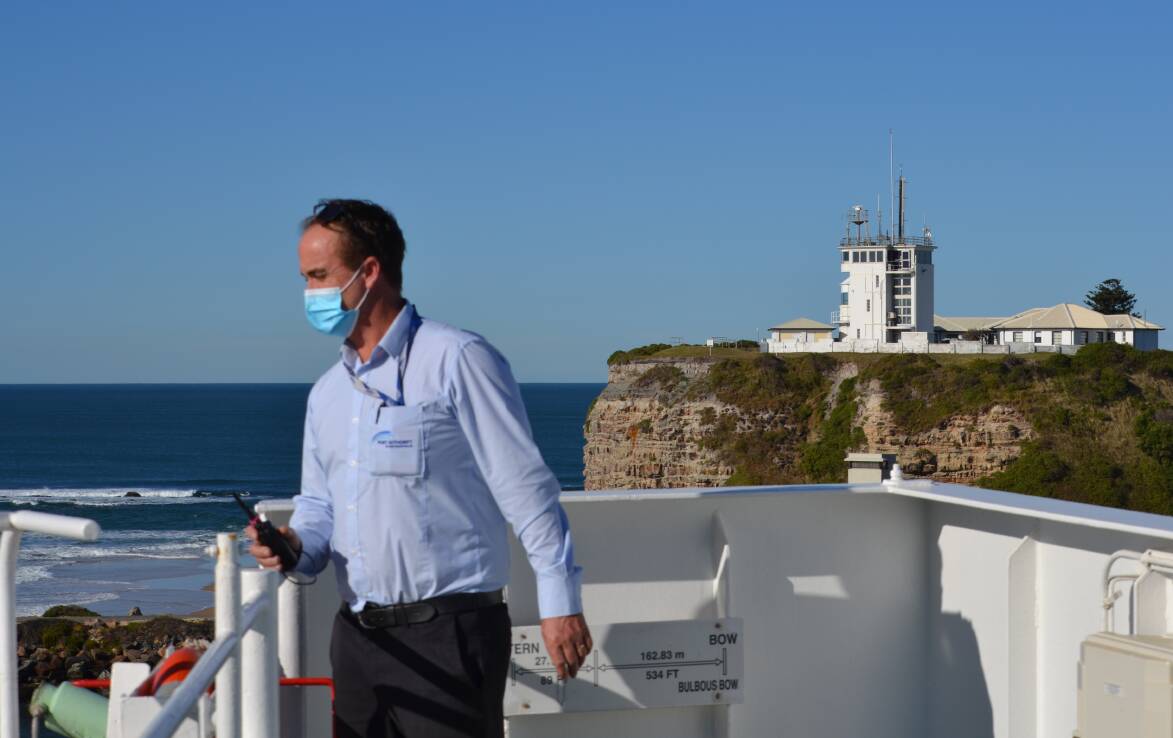
Back then, Nobbys was, indeed, an island. The First Nations people called it Whibayganba.
"I look upon it as a site of great cultural significance," says author and historian Professor John Maynard.
The Indigenous story attached to Whibayganba tells of a giant kangaroo that had swum to the island and hid inside it to escape punishment for attacking a female wallaby. To keep pursuers off the island, the kangaroo would bang his tail, causing rocks to fall and the earth to shake. As Professor Maynard says, that story reverberated through the years, as it held references to earthquakes, so it took on even greater meaning after the 1989 disaster that hit the city.
"When you look at the early [colonial] artworks, you can see the island was shaped like a giant kangaroo," says Professor Maynard.
Colonial authorities risked the wrath of the kangaroo in the 1850s, shearing the island's height roughly in half to about 28 metres and flattening its pointed crown to build a platform for the lighthouse.
That was but one measure to reshape the harbour's entrance in an effort to tame Mother Nature for the sake of safer shipping. One of the earliest projects was to join Nobbys to the mainland.
In 1818, during a visit to the penal settlement built at the mouth of the Hunter River, Governor Lachlan Macquarie decided to fill the channel between the island and the south headland, "for the purpose of deepening the main channel or entrance into the harbour", as he wrote in his journal. Evidently not a man to ponder for too long, Macquarie had work begin on the project the following day, using convict labour. However, it would take 28 years for Macquarie Pier to be completed.

Later came the breakwaters reaching further out to sea on either side of the harbour entrance, those structures built like headstones on the wrecks and memories of ships that ended their days trying to enter Newcastle.
As we enter the harbour, with two tugs attached to help guide the Anikitos, Nobbys glides past at roughly the same height as the ship's bridge. The lighthouse continues to throw a beam out across the sea, warning mariners, although these days it is unmanned. The historic buildings are populated by those who use light in a creative way; they are now artists' studios and a gallery.
Helping guide the ship along the channel, Mark Webb says he never loses sight of the notoriety of this entrance. Over to the right, the rusting bones of the Adolphe, a French sailing ship wrecked in 1904, jut above the Stockton breakwater, like some phantom warning mariners to avoid history repeating.
"Oh, I think you'd be silly not to consider that every time," Captain Webb says. "But I suppose in many industries there's lots of inherent risks, and these are the ones we get to deal with on a day-to-day basis."
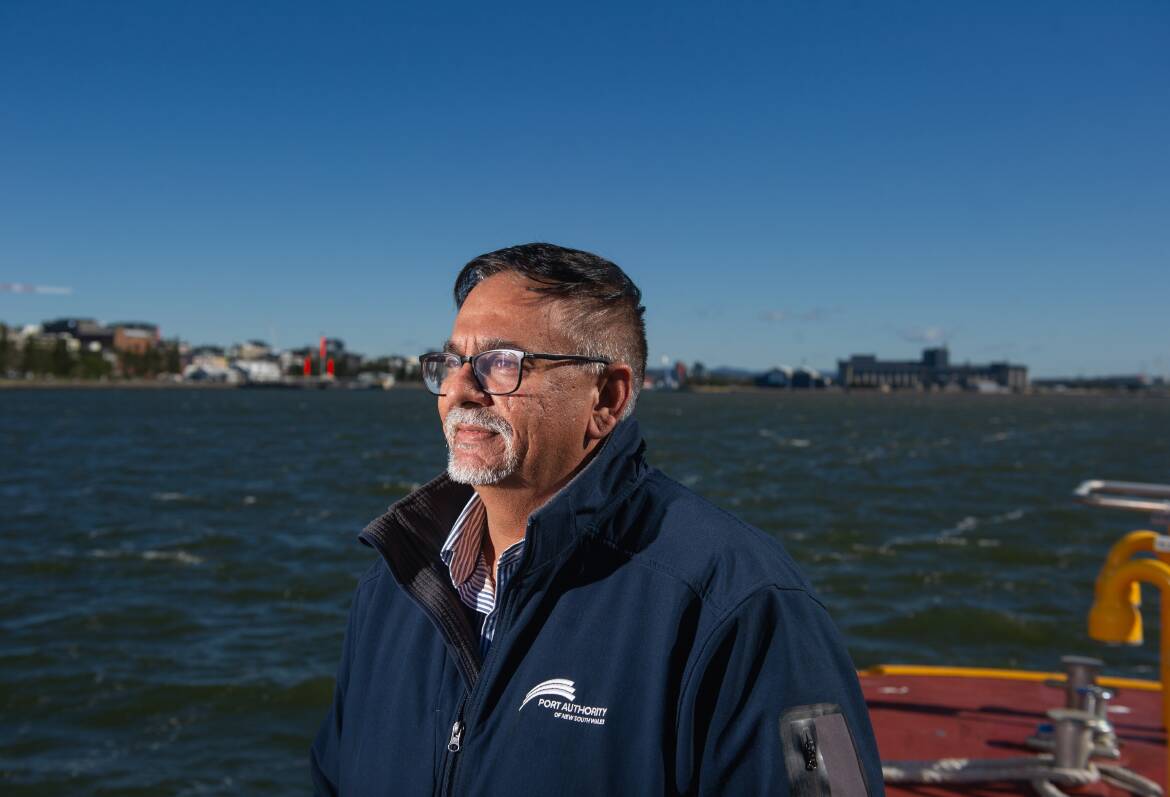
FROM his corner office in the Port Authority of NSW's Newcastle headquarters at the eastern end of Wharf Road, Harbour Master Vikas Bangia has what he calls a "strategic view".
He looks out towards the harbour entrance, giving him a chance to see what Mother Nature is up to, and what sort of greeting she may be planning for visiting ships.
"As the Harbour Master, I have the responsibility of the safe navigation of all the vessels, which are coming into the Port of Newcastle for loading and discharging," Captain Bangia says.
Vikas Bangia's maritime career stretches back more than 30 years, serving on ships and on shore. His last ports of call were on Australia's north-west coast, where he was Harbour Master at Dampier and Broome.
Since arriving in Newcastle about 18 months ago, he says, "the weather has not been very kind".
In recent months, the Harbour Master has had much to see from his office, with wild weather stirring up the sea, and the flooded Hunter River carrying debris and silt into the harbour.
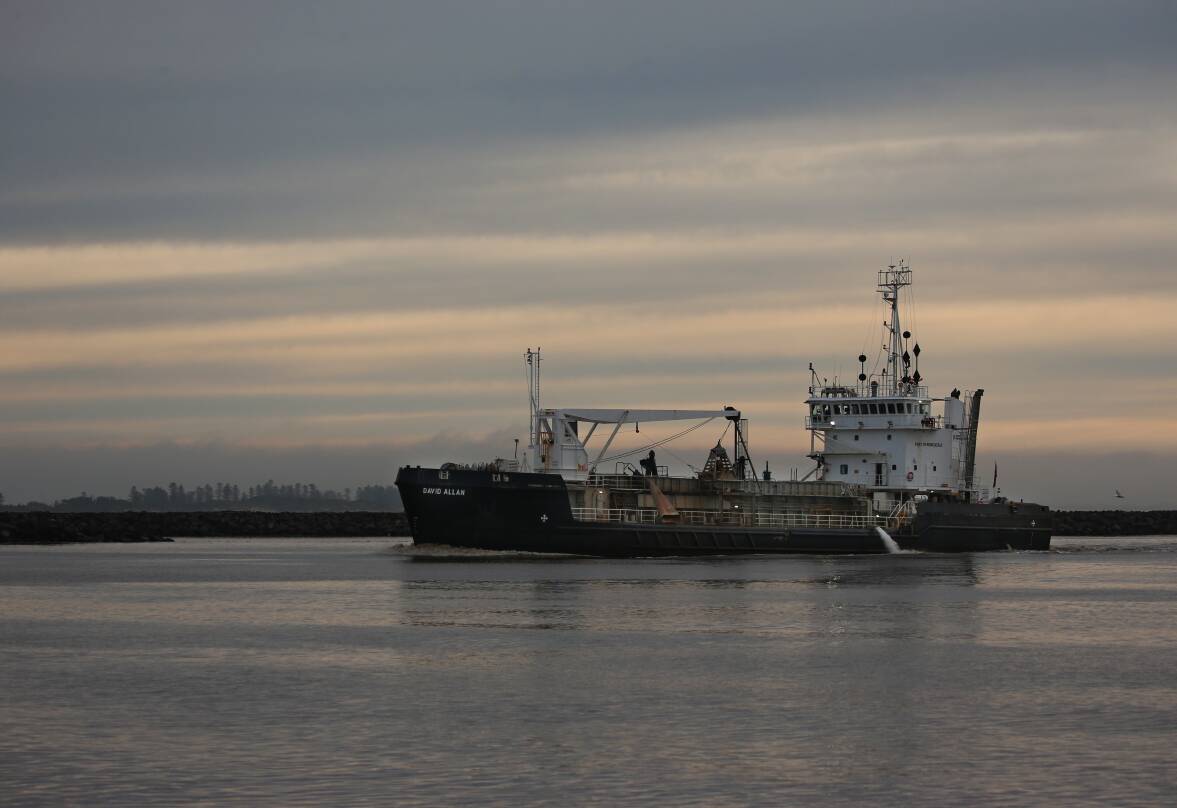
The silt affected the channel's depth of 15.2 metres, creating plenty of work for the David Allan, the port's vessel that dredges the harbour to ensure laden ships aren't kissing the bottom. At the best of times some of the biggest ships have barely a metre of water under them as they leave the port.
"During the flood events, we definitely lost depth because of all the siltation coming in," Captain Bangia says.
"You want to optimise the maximum load for a ship, but because you really don't know how much silt is coming through, that's the risk. You have to balance that."
Occasionally, the elements, such as big swell or thick fog, force the port to shut, "if the risk is quite big", but even when the river was up earlier this year, pouring a lot of water and silt into its mouth, the ships kept coming and going.
"It was one of the longest fresh events in the history of Newcastle, for 64 days," Captain Bangia says, "and I'm absolutely proud to say we had 791 vessel movements without incident."

BACK on the bridge of the Anikitos, Captain Mark Webb is threading the 190-metre ship through the channel.
As he points out, much bigger ships, up to 300 metres long and 50 metres wide, negotiate this entrance. And they can sit close to the bottom of the channel.
"This ship draws about seven metres, so we've got plenty of water," adds Captain Webb.
Just to the left, on the other side of Macquarie Pier, in 2007, the most surreal sight in the port's life played out in wild weather, when the 76,000-tonne bulk carrier Pasha Bulker was driven onto Nobbys Beach.
What was an international news story, a bizarre tourist attraction and a vision splendid for photographers was a massive and precarious job for salvage crews, as it took three attempts and 25 days before Pasha Bulker had water under its hull once more.
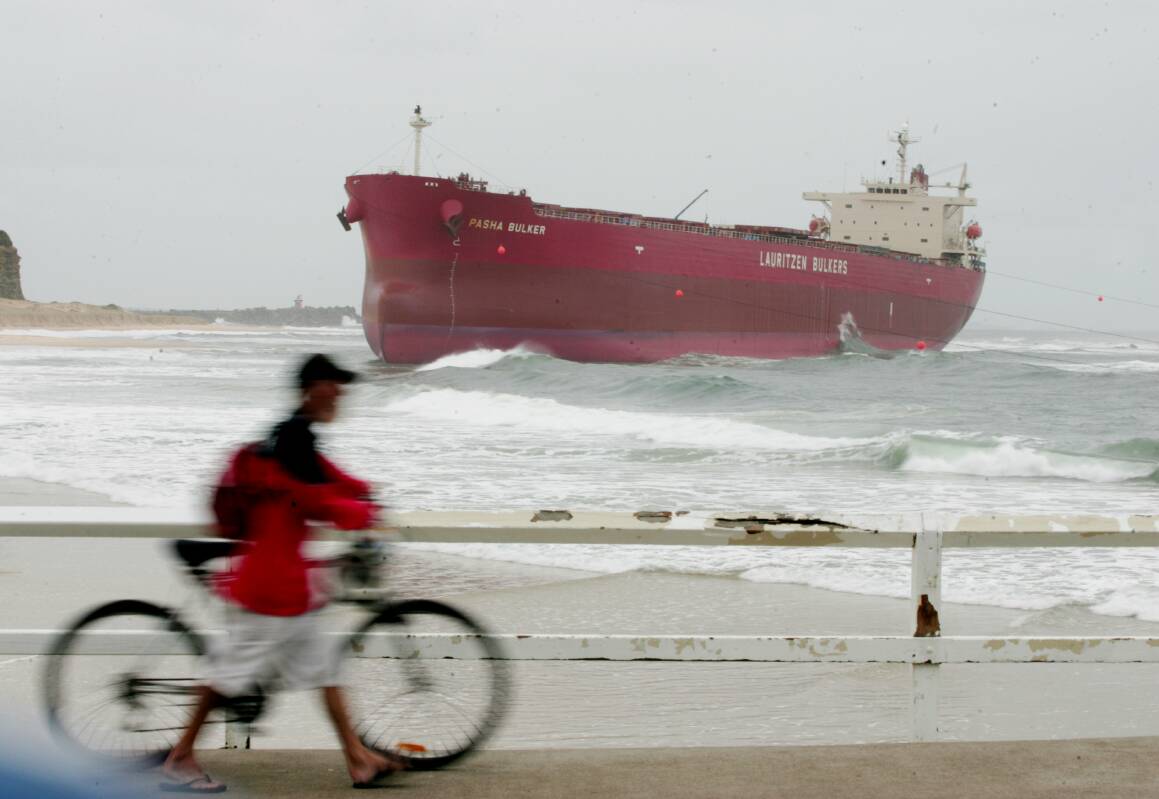
One of those who drove hours to just see the stranded Pasha Bulker was Peter Ernst, now the Head of Regional Ports for the Port Authority of NSW.
"It was magnificent to see in one way, but it was extremely concerning in another," Peter Ernst recalls. "So it's that second part that's really in my mind. That's what we're trying to avoid on a daily basis."
Indeed, for the port authority, having a Pasha Bulker incident occur in the harbour entrance is the stuff of nightmares.
"We've focussed a lot on reducing the probability of an incident like that, because the consequences are so high," says Vikas Bangia.
Or, as Peter Ernst puts it, "that has the ability to stop Newcastle, and not for days, for months".
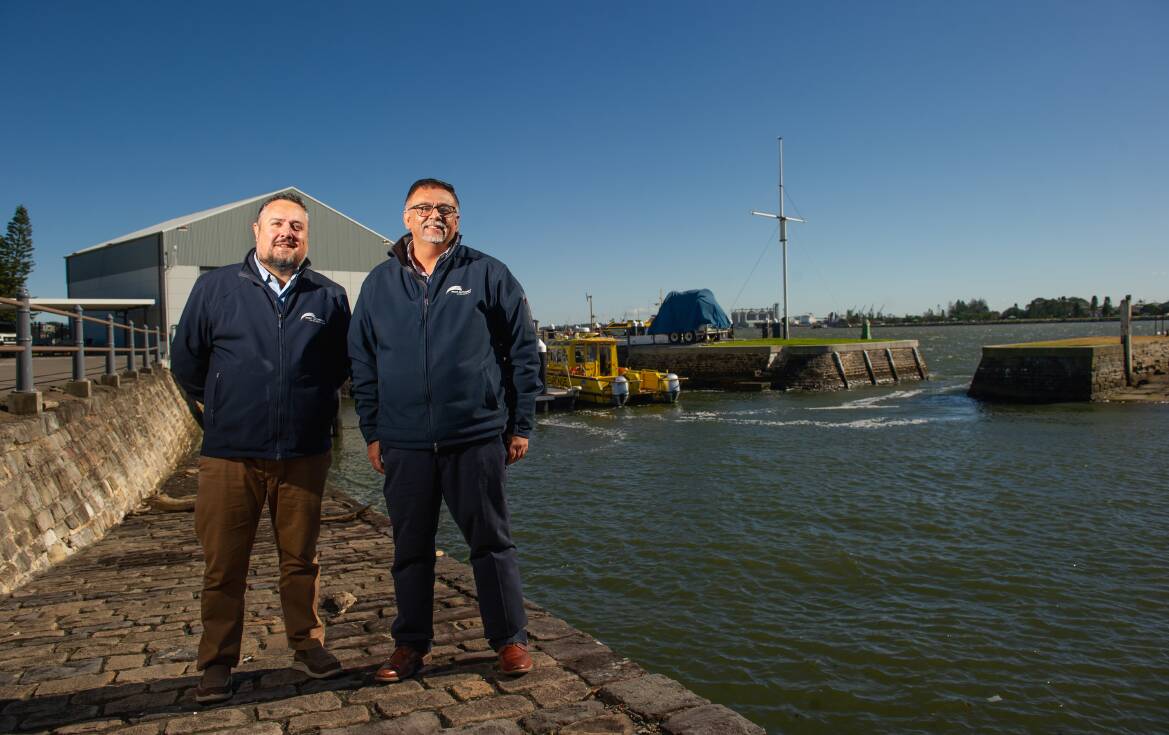
The Anikitos gracefully makes its way along the channel, with waterfront life flanking her. To the left, the central business district clambers the hill to its crown of Christ Church Cathedral. To the right is the parkland foreshore of Stockton.
Captain Mark Webb marvels at how close maritime life and everyday Novocastrian life are to each other.
"There's all the people enjoying the foreshore, and they're looking at us as much as we're looking at them," he says. "Somebody can stand there, walking their dog and just look at a ship go past. It's great."
The ship curves around a section known as "The Horseshoe", tracing the Stockton peninsula as the Anikitos heads up what is still referred to as the Steelworks Channel towards the south arm of the Hunter River.

While we're in calmer waters, Mother Nature is still trying to harass the Anikitos.
The ship is dealing with "windage", as a 20 knot blast from the west pushes against the steel hull, trying to push it towards Stockton.
"Visually, we're steering up the channel, but at quite an angle, and that's just to counteract the wind drift," explains Captain Webb.
What's more, there has been an "astonishing" flow of fresh water from the Hunter's north arm, just off to the right, and, Mark Webb says, "that's had a large impact on how we handle vessels".
We pass Anikitos' berth, Dyke 5, on the Carrington shore. The ship has to be taken into the river's south arm, to a section the pilot calls the swing basin.
With the help of the tugs, the ship will be turned 180 degrees.
"The channel's too narrow to swing it around here, so we'll take it up to a wider section, we'll swing it around and bring it back," says Mark Webb.
The swing basin is just off the south-eastern edge of Kooragang, which is lined with nine more berths, most of them for coal ships waiting to be fed by the loaders on the island.
"It really is an amazing powerhouse, the number of ships jammed into a very small place. And it's constantly on the go, 24/7," remarks Captain Webb.
The Anikitos is turned and cruises back towards its berth, but not before the pilot has to order five sharp blasts on the horn to tell a couple of blokes fishing in a tinny to move - and fast.
"Particularly on the weekends and holidays, it's a common problem, and the sound of whistles is a common one on the harbour, and it's usually to do with that," Mark Webb says, adding that most ships have a blindspot from 300 to 500 metres in front of them, so it is crucial that other vessels get out of the way.

"He's got the message. Slow ahead!"
The Anikitos is manoeuvred into the berth, gently nuzzling into the wharf, with Mark Webb standing on a bridge wing, giving instructions over a two-way radio.
Finally, with the lines tied and the ship still, he says, "Anikitos all fast at Dyke 5 at one-zero-three-six (10.36am)."
Over the next 24 hours or so, the ship will be filled with about 48,000 tonnes of coal, then it will be off again, out of the calm of the harbour and into the wild blue yonder, headed for Japan.
COVID restrictions keep the crew confined to the ship while in port. The Australian and state governments have relaxed rules for visiting seamen, but some mariners are still not allowed to go on shore by their shipping companies, out of concern coronavirus could be brought back on board.
The restrictions frustrate Captain Kypraios, who has family members in Sydney, including two grandchildren he is yet to meet.
"It's very hard, I see them only in videos," he says, lamenting that he and his crew feel like prisoners.
"Over six months, and no step onto land. That's a pity. Why? This is the big question."

Captain Mark Webb disembarks, stepping onto dry land. But not for long. He will soon be back on the bridge of a ship, to ensure its safe arrival or departure, and helping conduct the ceaseless symphony of Newcastle's harbour life.
"Everybody has a story to do with the port," he says. "Watching the tugs, the tug ballet. It's a very visible port. And to say that you're a part of it. And they can say, 'Oh, I've seen the ships come in. I've seen the tugs. I've seen the helicopter.' It's a really big thing."
And does anyone have a better office than him, I ask Captain Webb.
"Don't tell them, but it is the best in town, I think," Mark Webb says, smiling, "with the view we have."
NEXT SATURDAY: The journey along the Newcastle shoreline to Honeysuckle.
The writer thanks historian Rosemary Melville for the information from her book, "A Harbour from a Creek".








